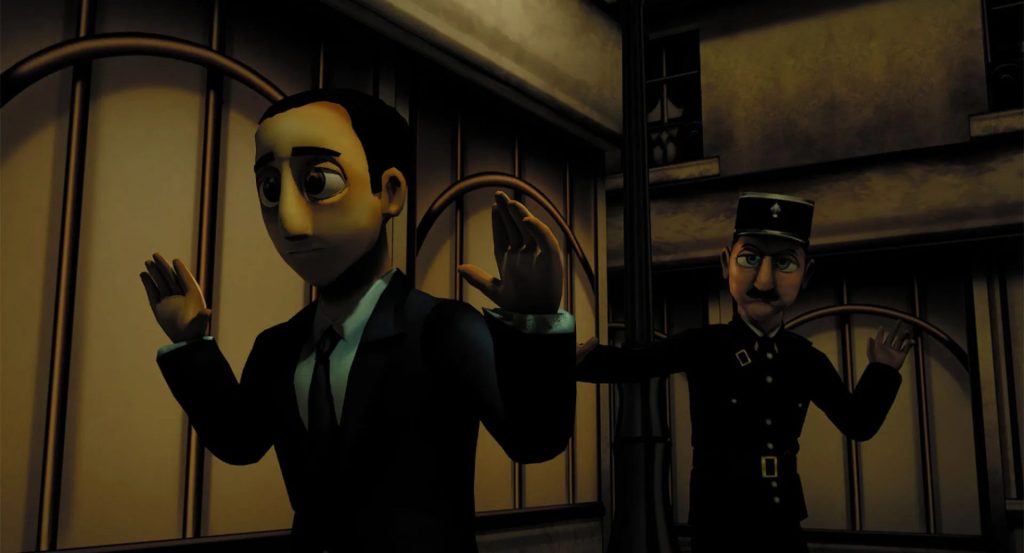
Games have a unique power to teach us about the full range of human experience. They allow us to walk in the shoes of others. The Light in the Darkness is one such game.
The free game teaches us about the Holocaust from the point of view of an ordinary Jewish family whose lives are destroyed by anti-semites and Nazi collaborators in World War II France.
It hegins in a family setting. In the spring of 1939, a French-Jewish schoolboy called Samuel Abramovich sits at home with his parents, and relates a story he was taught at school. A wealthy “man with a big nose and a long beard” is punished for killing a bird, forced to dance forever in a thorny bush. The boy’s parents are appalled. They discuss whether they should explain to Samuel that the story is cruel anti-semitic propaganda, or whether it’s kinder to protect him from the truth.
This is one of the few choices players are given in The Light in the Darkness, that follows the tragedy of Samuel, and his parents Moses and Bluma, as their lives are torn apart, little by little.
The family senses danger closing in on them, as their freedoms are taken away, as they are required to hand over the modest tailors’ shop they own, as they are forced to wear a yellow star, and then, finally, as they are separated and transported to camps.
Standard enemy
The game was funded and directed by Luc Bernard who has been developing games for 15 years. “I’ve always wanted to make this game,” he says. “Many games are set in World War II, but mostly they are shooting games that avoid even mentioning the Holocaust.”
Nazis are a standard enemy in series’ like Doom, Medal of Honor, and Battlefield, operating merely as cannon fodder for run-and-gun shooter campaigns. Their actual historical barbarity almost always takes a backseat to fictions about dastardly super-weapons that must be destroyed.
Bernard, who is Jewish, hopes that his game will be used as a teaching resource for children and young people.He says the game has been played by 100,000 players in its first few weeks of release, and estimates a reach of 2 million players in the next year.
As well as narrative choice sections and quest missions, The Light in the Darkness features historical photography and video footage from the war.
“Holocaust education is not as effective as it used to be. Antisemitism is at an all time high that we have never seen in our lifetimes,” says Bernard. “Games need to address issues like the Holocaust in the same way as we see in books, movies and even comic books.
Bernard spent a year researching the stories of French Jews during the war, via The Shoah Foundation and the U.S. Holocaust Museum. He says that he was struck by how often Jews were betrayed by their neighbors.
During the game, the family discusses potential choices they could make, like going on the run or trying to emigrate to the United States, but these are illusory. The player has almost no agency to change events. “This is purposeful,” says Bernard. “I want players to see that from the Jewish perspective, survival wasn’t in their hands. It was just a matter of luck.”
The game mostly takes place in the family home and its surroundings in Paris. “Holocaust education is often based on how many people were killed. We don’t talk enough about who they were, and how their lives were affected. I want players to see these people as humans and not just as victims. I believe how they lived their lives is as important as how they were murdered.”
The Light in the Darkness is out now on PC, and is coming to PlayStation 5, Xbox, Nintendo Switch and mobile in the near future.
Colin Campbell has been reporting on the gaming industry for more than three decades, including for Polygon, IGN, The Guardian, Next Generation, and The Economist.
 GameDaily.biz © 2026 | All Rights Reserved.
GameDaily.biz © 2026 | All Rights Reserved.